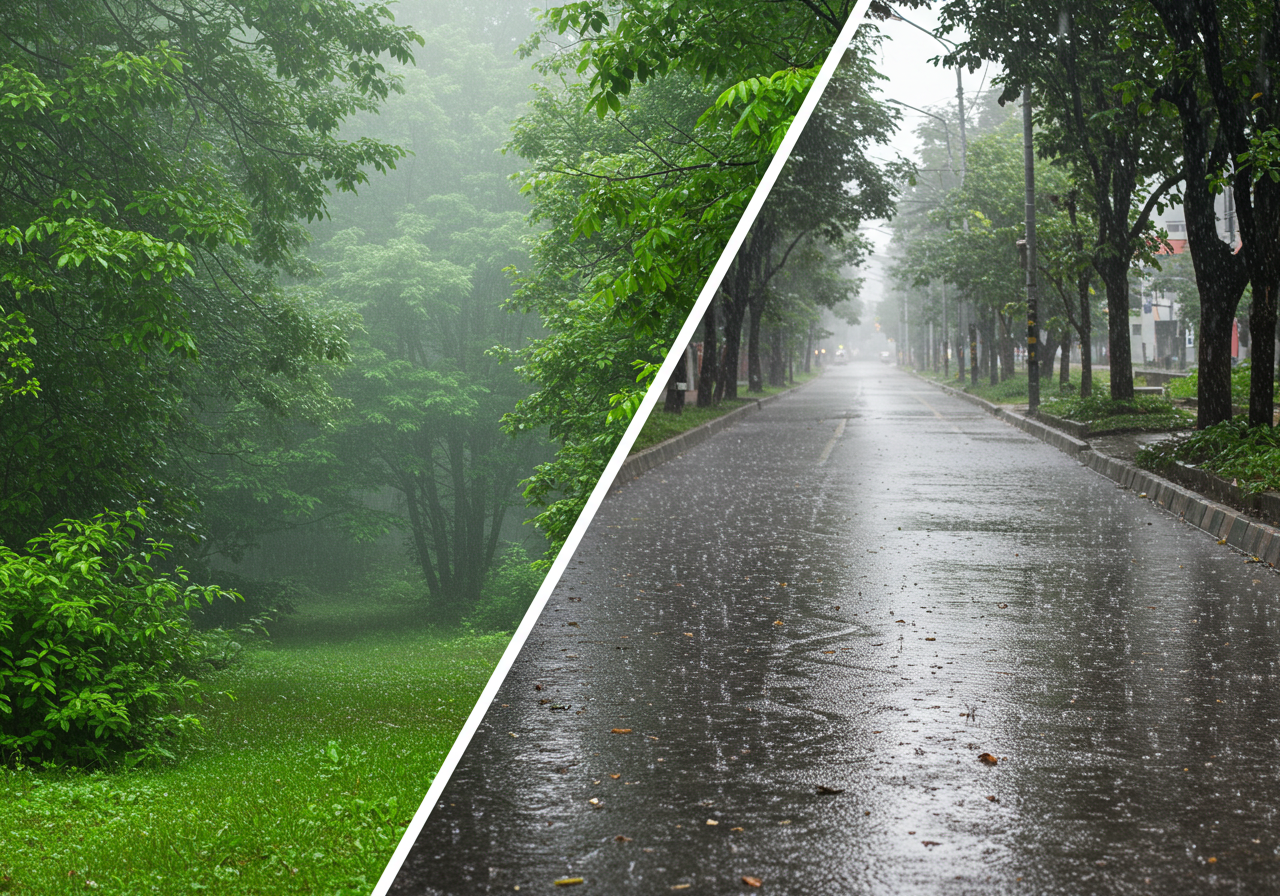Rain Smells Different in Cities and Forests

The Mystery Behind the Scent of Rain
We’ve all felt it — that earthy, fresh smell in the air just before or after it rains. But did you know that the scent of rain can change dramatically depending on where it falls? This is one of those weird science discoveries that blends chemistry, biology, and even geology. Welcome to the world of petrichor — the science behind rain’s signature scent.
What Is Petrichor?
Petrichor is the name scientists gave to the pleasant, earthy smell that arises when rain hits dry ground. It was coined in the 1960s by Australian researchers who discovered that plant oils and soil bacteria produce specific compounds — like geosmin — that are released into the air when rain hits the surface.
Why Does Rain Smell Different in Different Places?
Here’s where things get interesting: the composition of the ground, vegetation, pollution levels, and even the temperature affect how rain smells. In forests, the rain mixes with rich organic materials and plant oils. In cities, the scent blends with dust, exhaust residues, and asphalt. In deserts, the scent can be even more intense due to prolonged dryness and concentrated geosmin build-up.
If the rain smells different depending on where you are… imagine what the moon might reveal about who you are.
🌕 Discover What the Moon Says About You
What if the moon could reveal hidden truths about your personality, strengths, and life path? Moon Reading offers a personalized, interactive astrology reading based on your birth date and lunar position. It’s shockingly accurate — and incredibly popular.
🌌 Get Your Free Moon ReadingThe Role of Geosmin
Geosmin is a compound produced by bacteria in soil, especially actinomycetes. It’s what gives beets their earthy flavor and contributes heavily to the smell of rain. Our noses are incredibly sensitive to geosmin — we can detect it at concentrations as low as 5 parts per trillion!
Urban vs. Natural Rain
In cities, the smell of rain might carry a slightly metallic or oily undertone due to the chemicals in roadways and buildings. In forests, it tends to be richer, greener, and more organic. The rain’s aroma becomes a fingerprint of its environment, telling us a lot about what’s in the air and on the ground.
The Science of Aerosols
When raindrops hit a surface, they trap tiny air bubbles that rise and burst, releasing microscopic particles — including scent compounds — into the atmosphere. This aerosol effect helps explain why you can often smell rain even before it arrives.
Want More Scent-Based Science?
You’ll love our post on Why Some Flowers Smell Good and Others Don’t — it’s a deep dive into the chemistry of plant perfumes and pollination!
External Scientific Sources
For an in-depth explanation of petrichor and rain chemistry, check out Scientific American’s article on what makes rain smell so good, which explores how our environment shapes the scent of storms.
Final Thoughts
The next time you catch that unmistakable scent in the air, remember: you’re smelling a complex reaction between water, air, life, and earth. Whether it’s a rainforest or a city block, rain has a voice — and it smells amazing.
Where does rain smell best to you — in the woods, the streets, or the desert? Let us know in the comments!
Want to uncover the secrets of the moon and the cosmos?
What if the moon could reveal hidden truths about your personality, strengths, and life path? Moon Reading offers a personalized, interactive astrology reading based on your birth date and lunar position. It’s shockingly accurate — and incredibly popular.
Find out more ➜ 🌕 Discover What the Moon Says About You
📌 Original Content Notice: This article was originally published on Daily Fact Drop – Your Daily Dose of Mind-Blowing Facts. All rights reserved.
Copying, reproducing, or republishing this content without written permission is strictly prohibited. Our editorial team uses factual research and original writing to bring unique curiosities to our readers every day.